Sauna and Cold Plunge: Complete Guide to Longevity & Safety
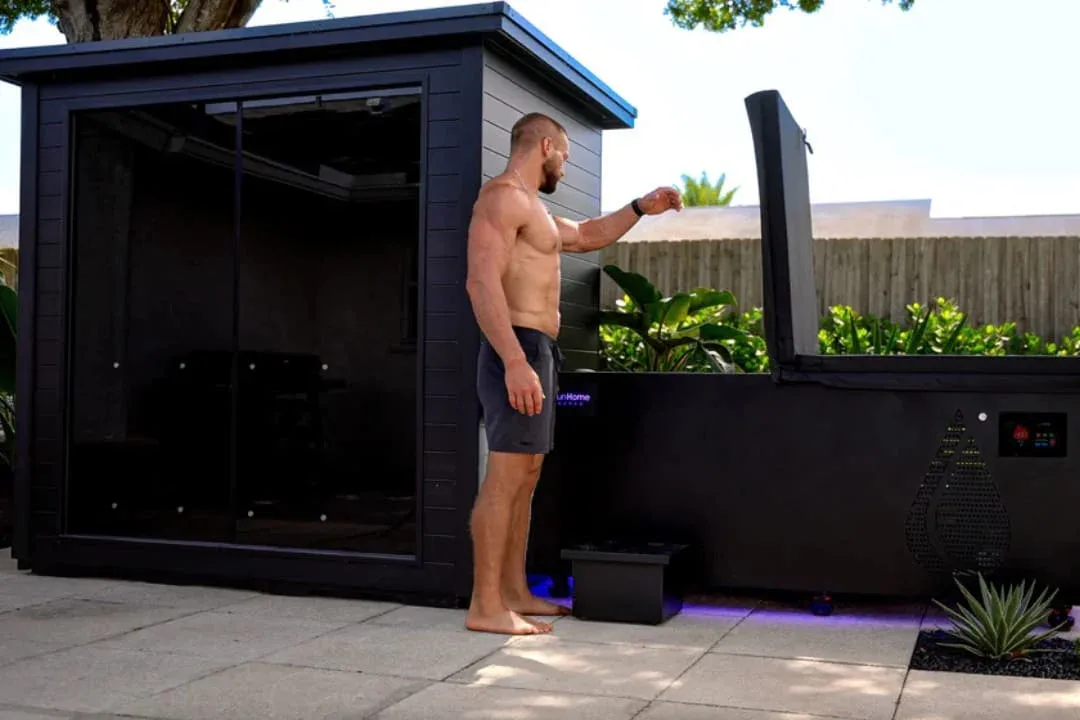
Your body’s response to temperature extremes can unlock powerful health benefits. The sauna and cold plunge combo switches between hot sauna sessions and cold water immersion. This helps your body and mind through contrast therapy.
This practice mixes old Nordic tradition with new science. It gives powerful results through temperature changes that help cells repair and boost heart health.
My first sauna-cold plunge experience took me from skeptic to believer. The shift from the sauna’s hot heat to the cold plunge’s chill left me energized and renewed.
Let’s explore the Nordic Cycle, the science of contrast therapy, and the life-extending benefits that await you.
Table of Contents
| Medical Disclaimer This content is for educational purposes only, not medical advice. Consult your healthcare provider before starting sauna or cold plunge therapy. We are not liable for any effects resulting from practices described here. |
Embracing the Nordic Cycle: History and Culture
The Nordic Cycle is an old practice. For centuries, people have switched between sauna heat and cold plunges. It stays a key part of wellness in Nordic cultures.
Finnish saunas have been used for over 2,000 years. They are deeply part of cultural traditions where families and communities gather for health and social benefits.
In Finland, a nation of 5.5 million people, there are about 3.3 million saunas. That’s nearly one for every TV set. This means sauna bathing isn’t a luxury. It’s a daily health practice for all income levels. (Source: Harvard Health Publishing)
The old process works like this:
- Start with a 10-20 minute sauna session. Let the heat open your blood vessels and boost circulation.
- Then take a cold plunge for 30-120 seconds. Let the cold tighten blood vessels.
Modern science has proven what Nordic cultures have practiced for thousands of years. This temperature contrast creates deep body changes that support long life and health.
How Saunas and Cold Plunges Work Together: The Science
When heat meets cold, your body responds with powerful healing. The mix of sauna warmth and cold plunge creates different body changes. Scientists call this hormetic stress. This is good stress that makes your system stronger.
Blood Flow Gets Better Through Vascular Exercise
Traditional saunas create vasodilation. This makes blood vessels expand and boosts blood flow. Better circulation delivers oxygen and nutrients more efficiently throughout your body1. (Source: Elsevier / Mayo Clinic Proceedings)
Cold plunges trigger vasoconstriction. This makes blood vessels narrow quickly. This vascular “exercise” – the switching expansion and contraction – improves how arteries work and helps heart function.
Research shows regular sauna use improves endothelial function. This is the protective lining of blood vessels. It helps them control blood pressure and clotting better2.
Heat Shock Proteins and Cold-Shock Proteins
Sauna sessions trigger heat shock protein (HSP) production. This increases by up to 48% with regular use. These proteins act as cellular repair tools. They protect against protein damage and support longevity pathways. (Source: Found my fitness)
Cold exposure activates cold-shock proteins. These promote cellular strength and may have anti-aging effects.
A 2024 study published in Advanced Biology by researchers at the University of Ottawa found that brief cold water immersion initiates cellular changes that support metabolic health and immune function3. The study showed that despite initial dysfunction, consistent 7-day cold exposure increased autophagic activity and decreased cellular damage markers.
Immune System Gets Activated
Heat exposure boosts white blood cell production. It activates natural defense mechanisms. Cold exposure further boosts immune function. It triggers an increase in white blood cells and enhances metabolic rate through sympathetic nervous system activation.
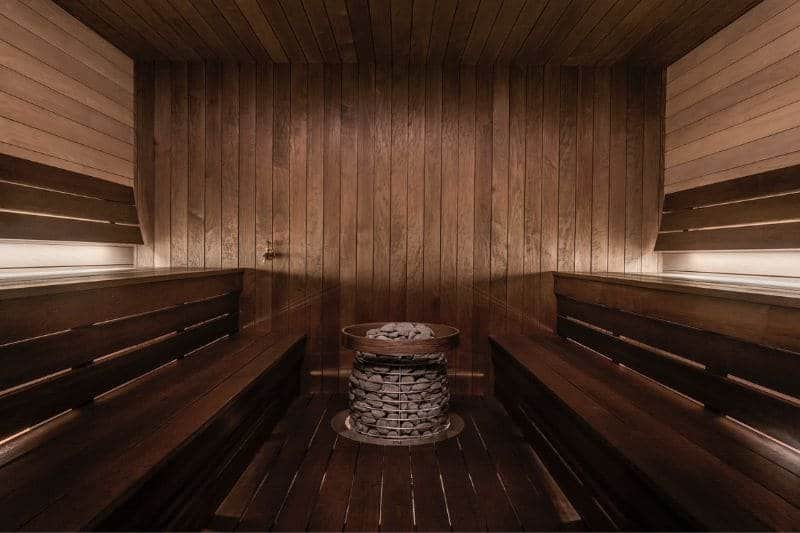
Muscle Recovery Gets Faster Through Temperature Variation
Sauna sessions promote muscle recovery by increasing blood flow to muscles, delivering oxygen and nutrients that aid repair. The heat helps relax muscles and relieve tension, reducing muscle soreness risk and supporting faster post-workout recovery.
Cold plunges act as natural pain relievers, numbing pain receptors and reducing muscle inflammation. Cold temperatures constrict blood vessels, minimizing swelling and speeding metabolic waste removal, promoting faster recovery and reducing post-exercise soreness.
What are the Benefits of the Sauna and Cold Plunge Combo?
While athletes often use contrast therapy, its benefits help everyone seeking better health and wellness.
1. Enhanced Athletic Recovery and Performance
Research shows contrast therapy significantly improves recovery in athletes. A 2017 study in BMC Sports Science found that contrast water immersion enhanced perceptual recovery within 1 hour after fatiguing exercise compared to other recovery strategies4.
A 2024 study published in Nature Scientific Reports found that contrast therapy using alternating heat and cold compression improved muscle tension, elasticity, and tissue perfusion in combat sports athletes better than heat or cold therapy alone5.
The performance benefits come from:
- Lactic Acid Reduction: Studies show contrast therapy helps reduce lactic acid buildup in muscles more effectively than passive recovery methods.
- Faster Fatigue Recovery: Research indicates team sports players who used alternating hot and cold therapy recovered from fatigue within 24-48 hours compared to longer recovery times with cold therapy alone.
- Improved Circulation: The alternating vasodilation and vasoconstriction creates a pumping effect that enhances blood flow and nutrient delivery to muscles.
2. Better Heart Health and Circulation
Traditional saunas create better circulation by causing blood vessels to expand. This promotes increased blood flow. Better circulation delivers oxygen and nutrients more efficiently to muscles and organs. [1]
Cold plunges cause blood vessels to narrow rapidly. This helps reduce inflammation and flush out metabolic waste products.
When switching from sauna to cold plunge, the rapid temperature change creates a pumping effect in blood vessels. This enhances circulation even more.
3. Stress Relief and Better Mental Clarity
The mix of heat and cold provides a unique sensory experience. It promotes relaxation through multiple ways:
Dopamine and Norepinephrine Release: Cold exposure at 57°F (14°C) increases dopamine levels by 250% and norepinephrine by 530%, according to a study published in European Journal of Applied Physiology6. These brain chemicals create lasting mood improvements and better focus that can last for hours after your session.
Stress Strength Building: Regular contrast therapy strengthens your ability to handle stress. It trains your nervous system to adapt to controlled stressors. This builds mental toughness that transfers to daily life challenges.
Brain Function: The alternating temperature exposure enhances mental clarity. Cold exposure may affect cognitive performance, though effects vary by individual and exposure conditions, according to systematic research on cold and cognition7.
4. Weight Loss Through Brown Fat Activation
Dr. Susanna Søeberg’s research established the “Søeberg Principle”. End temperature therapy sessions with cold exposure and allow natural rewarming. This maximizes metabolic benefits.
Cold exposure activates brown adipose tissue. This is the metabolically active fat responsible for burning calories and controlling body temperature. This process, called cold-induced thermogenesis, can speed weight loss when combined with regular sauna sessions.
5. Immune System Gets Stronger
A 2024 study of 60 adults found that regular cold shower exposure significantly increased immunoglobulin levels. The study showed cold exposure enhanced both T-cell activity and antibody production. Participants who took cold showers daily for 90 days had elevated levels of IL-2 and IL-4 cytokines, indicating stronger immune cell function8.
Heat shock proteins from sauna use also support immune health. Research confirms these proteins activate immune cells like lymphocytes and macrophages9. They help your immune system respond better to threats and support overall cellular defense mechanisms.
6. Better Sleep Quality and Recovery
Sauna use before bedtime helps lower core body temperature afterward. This triggers natural sleep mechanisms. The nervous system activation from proper contrast therapy protocols can significantly improve sleep quality and recovery.
7. Body Detoxification
The University of Alberta’s BUS Study (Blood, Urine, Sweat) found that certain toxic elements were preferentially eliminated through sweat rather than urine or blood. The study showed that heavy metals like arsenic, cadmium, lead, and mercury appeared in higher concentrations in sweat samples10.
Sauna sessions promote sweating, which helps remove some toxins through your skin. Cold plunges support this process by improving lymphatic circulation, helping flush metabolic waste products from tissues.
However, medical experts note that your liver and kidneys remain the primary detox organs. Sweating provides additional support but shouldn’t be considered the main way your body eliminates toxins.
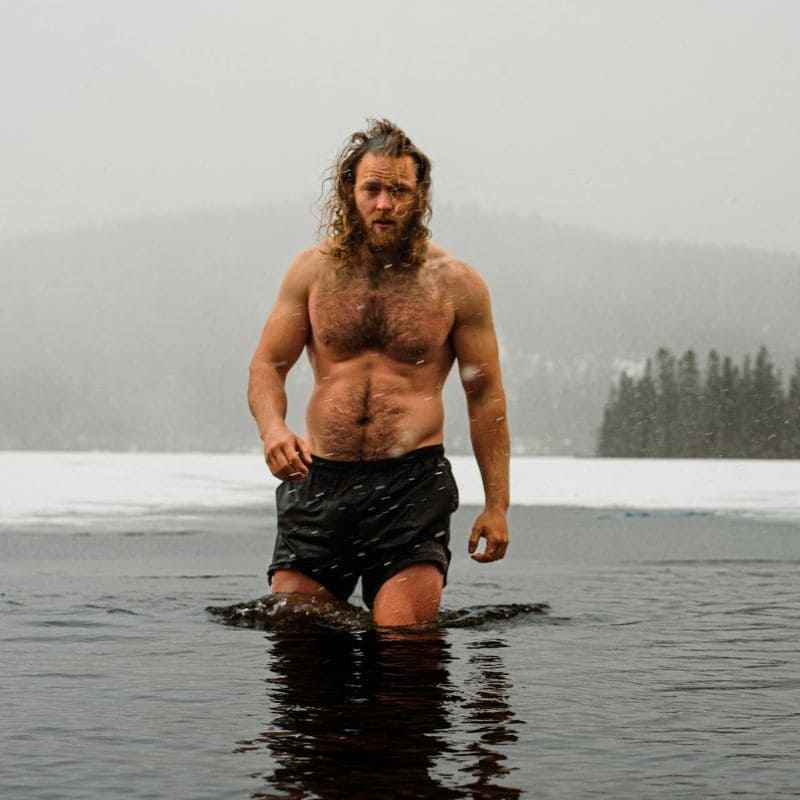
8. Better Skin Health
A controlled study published in Dermatology journal found that regular sauna use resulted in more stable skin barrier function and increased moisture retention in the top layer of skin11. People who used saunas regularly showed better skin pH balance and improved water-holding capacity.
Regular sauna sessions increase blood circulation, delivering essential nutrients and oxygen to your skin cells. A 2023 study in the International Journal of Dermatology found that sauna therapy may help reduce inflammation in skin conditions like psoriasis and eczema12.
To know more, please read my detailed article on sauna benefits for skin.
Cold plunges complement this by helping reduce inflammation and calming irritated skin. The cold helps tighten pores and can be especially beneficial for conditions like acne or puffiness by soothing inflamed areas.
9. More Energy with Adrenaline Rush
Research shows that cold water immersion triggers a massive release of stress hormones. A study found that norepinephrine levels increased from 359 pg/ml to over 1,171 pg/ml during 45 minutes of cold water exposure13. This creates a natural energy boost that can last for hours.
These chemicals make you feel more alert and focused. The energy boost happens because your body mobilizes resources to handle the controlled stress of temperature change.
Switching between intense sauna heat and cold plunge creates this controlled stress response safely. The rapid temperature changes stimulate your nervous system and cause blood vessels to expand and contract quickly, increasing blood pressure and heart rate temporarily while boosting energy levels.
Benefits Comparison Summary
| Benefit Category | Sauna Only | Cold Plunge Only | Combined Therapy |
|---|---|---|---|
| Athletic Recovery | Good | Moderate | Excellent |
| Heart Health | Good | Moderate | Excellent |
| Mental Health | Good | Good | Excellent |
| Immune Function | Good | Good | Excellent |
| Recovery | Good | Good | Excellent |
Critical Safety Considerations and Medical Risks
While contrast therapy offers significant health benefits, understanding serious risks is essential for safe practice. Medical authorities emphasize that potential dangers can be life-threatening for certain populations.
Cold Shock Response and Drowning Risks
Plunging into cold water (50°F to 60°F) can trigger cold shock. This is a series of dangerous responses including sudden increases in heart rate, blood pressure, and breathing. During cold shock, you might gasp for air while underwater and can drown within seconds.
The cold shock response includes:
- Immediate hyperventilation and panic breathing
- Rapid heart rate increases up to 180 beats per minute
- Blood pressure spikes that can trigger cardiac events
- Loss of motor control and disorientation
Heart Problems and Medical Contraindications
Healthcare providers strongly advise against cold plunges for people with existing heart conditions. The rapid heart changes can trigger:
- Ventricular and atrial arrhythmias
- Heart attack in susceptible individuals
- Dangerous blood pressure changes
- Cardiac arrest
For certain heart conditions, medical opinions vary on sauna safety. People with high blood pressure get mixed recommendations. Some doctors advise avoidance while others consider it safe with proper monitoring.
Hypothermia and Temperature-Related Injuries
Beyond immediate cold shock risks, cold water immersion can cause:
- Hypothermia: Rapid core body temperature drop affecting thinking and movement
- Frostbite: Tissue damage from extreme cold exposure
- Peripheral nerve damage: From prolonged cold exposure
- Afterdrop: Dangerous core temperature drop when returning to warmth
Who Should Avoid Contrast Therapy
The following groups should not participate in sauna and cold plunge therapy:
- Pregnant women (all trimesters)
- Children under 16 years old
- Individuals with heart disease
- People with uncontrolled blood pressure
- Those with breathing conditions like severe asthma
- Individuals taking medications affecting temperature control
- People with diabetes (due to reduced sensation and circulation issues)
- Anyone with eating disorders or body image issues
Evidence Quality and Research Limits
Medical authorities note that many touted benefits are based on personal experiences or small preliminary studies. This doesn’t mean contrast therapy can’t be beneficial, but the evidence quality varies significantly across claimed benefits.
Risk Assessment by Population
| Population | Sauna Risk | Cold Plunge Risk | Recommendations |
|---|---|---|---|
| Healthy Adults | Low | Moderate | Gradual start with supervision |
| Heart Disease | High | Very High | Avoid without cardiology clearance |
| Pregnancy | High | Very High | Avoid completely |
| Elderly | Moderate | High | Medical clearance required |
| Children | Moderate | Very High | Avoid under 16 |
Medical Clearance and Professional Consultation
Before starting any contrast therapy program:
- Talk to your healthcare provider, especially if you have medical conditions
- Get heart screening if over 40 or have risk factors
- Start with medical supervision if possible
- Learn emergency response procedures
- Never practice alone – always have supervision available
Healthcare providers can assess individual risk factors. They provide personalized safety guidelines based on your specific health status.
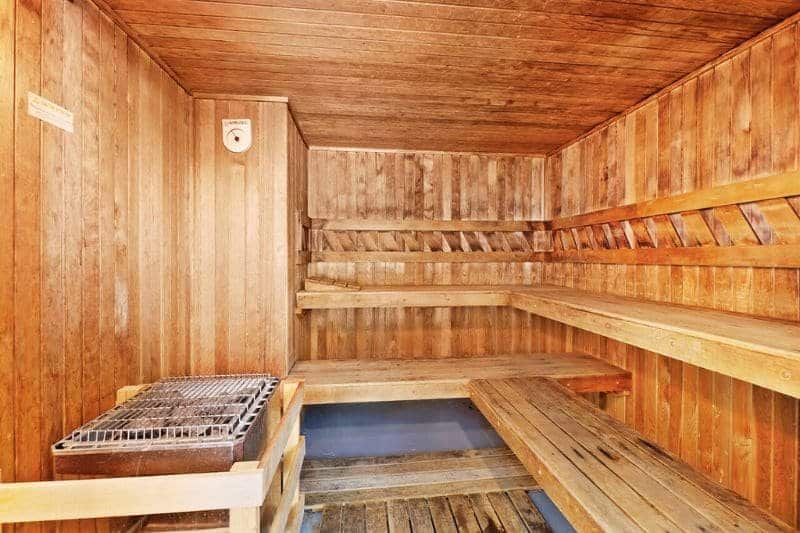
Advanced Protocols and Implementation
Creating an effective contrast therapy routine requires understanding optimal protocols backed by research and expert recommendations.
Evidence-Based Temperature and Timing Protocols
Traditional Finnish Sauna Protocol:
- Temperature: 176°F to 212°F (80°C to 100°C)
- Duration: 15-20 minutes per session
- Humidity: 10-20% (dry heat)
- Frequency: 4-7 sessions weekly for maximum longevity benefits
Dr. Rhonda Patrick’s research-backed protocol emphasizes that “temperatures above 190°F may actually be less beneficial than the optimal 174°F range“. Her recommended approach includes 174°F for exactly 20 minutes to maximize heat shock protein production.
Cold Plunge Parameters:
- Temperature: 50°F to 59°F (10°C to 15°C)
- Duration: 2-5 minutes per session
- Immersion: Neck-deep for maximum benefit
- Progression: Start with 30 seconds, build gradually
The Søeberg Principle for Metabolic Benefits
Dr. Susanna Søeberg’s groundbreaking research established the “Søeberg Principle” for maximizing metabolic benefits. Always end contrast therapy sessions with cold exposure and allow natural rewarming without external heat sources.
Andrew Huberman explains: “To increase metabolism through cold exposure, end with cold and perform the ‘Søeberg principle’ where after cold exposure you dry off with arms extended in open air“.
This protocol maximizes brown fat activation and calorie burning by forcing your body to generate internal heat.
Progressive Adaptation Schedules
Beginner Protocol (Weeks 1-2):
- Sauna: 5-10 minutes at 160°F
- Cold plunge: 30 seconds at 60°F
- Frequency: 2 sessions per week
- Rest: 2-3 minutes between temperature changes
Intermediate Protocol (Weeks 3-6):
- Sauna: 12-15 minutes at 170°F
- Cold plunge: 1-2 minutes at 55°F
- Frequency: 3-4 sessions per week
- Cycles: 2 rounds per session
Advanced Protocol (Week 7+):
- Sauna: 20 minutes at 175°F+
- Cold plunge: 3-5 minutes at 50°F
- Frequency: 4-7 sessions per week
- Cycles: 3 rounds per session
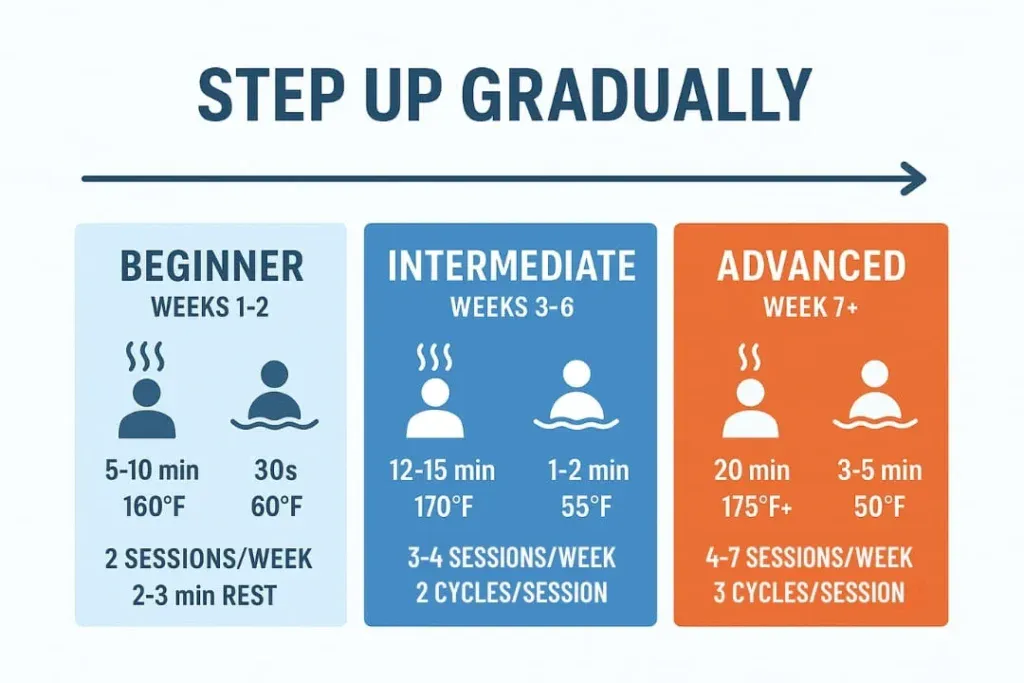
Athletic vs. General Wellness Protocols
Athletic Recovery Protocol: Focus on post-training recovery with specific timing to avoid interference with training adaptations.
- Avoid cold exposure within 6 hours after strength training
- Use contrast therapy on rest days for heart recovery
- Apply cold therapy immediately after endurance training
- Combine with proper hydration and electrolyte replacement
General Wellness Protocol: Emphasizes longevity and health benefits rather than performance optimization.
- Morning sessions for energy and alertness
- Evening sessions for relaxation and sleep quality
- Consistent daily practice for maximum health benefits
- Integration with meditation and mindfulness practices
Integration with Other Therapies
Contrast therapy can be enhanced when combined with:
1. Breathwork: Controlled breathing techniques help manage stress response and enhance benefits. Practice slow, deep breathing during both heat and cold exposure.
2. Red Light Therapy: Can be used during sauna sessions to enhance cellular repair and recovery benefits.
3. Hydration Protocols: Drink 16 ounces of water for every 10 minutes of sauna use. Include electrolytes to replace minerals lost through sweating.
Temperature and Timing Matrix
| Experience Level | Sauna Temp | Sauna Duration | Cold Temp | Cold Duration | Frequency |
|---|---|---|---|---|---|
| Beginner | 160°F | 5-10 min | 60°F | 30-60 sec | 2x/week |
| Intermediate | 170°F | 12-15 min | 55°F | 1-2 min | 3-4x/week |
| Advanced | 175°F+ | 15-20 min | 50°F | 2-5 min | 4-7x/week |
| Athletic | 175°F+ | 20 min | 50°F | 3-5 min | Daily |
Creating Your Ideal Routine at Home
Follow these practical tips to maximize contrast therapy effectiveness and optimize your wellness journey.
Right Temperature Guidelines
Aim for sauna temperatures between 160°F (71°C) and 190°F (88°C), depending on your tolerance and comfort level. For cold plunges, maintain water temperature between 50°F (10°C) and 60°F (15°C).
Duration and Intensity Management
Begin sauna sessions with 10-15 minutes, gradually increasing time as your body adapts. Follow with cold water immersion for 1-2 minutes. Repeat this cycle for 3-4 rounds, always ending with cold exposure for maximum metabolic benefits.
Proper Hydration Strategy
Hydration remains crucial during contrast therapy. Drink plenty of water before, during, and after sessions to prevent dehydration and support temperature control.
Session Frequency Guidelines
Start with 2-3 sessions per week, gradually increasing frequency based on your body’s response. Give your body adequate time to rest and recover between sessions to prevent overtraining.
Optimal Sequence Selection
Consider the order of sauna use and cold plunge. Most people prefer starting with sauna sessions to prepare bodies for cold water, though others benefit from beginning with cold exposure. Try both approaches to find your preference.
Equipment Setup: Creating Your Perfect Combination
Setting up your ideal sauna and cold plunge setup requires careful consideration of equipment types, budget, and space requirements.
Entry-Level Setup ($600-$1,000)
For beginners, portable infrared saunas paired with basic cold plunge solutions offer accessible starting points. Portable infrared units like the SereneLife model ($491) reach 140°F with easy storage. Simple cold therapy options include basic cold tubs requiring manual ice addition.
Mid-Range Configuration ($12,000-$15,000)
Consider combining full-spectrum infrared saunas with temperature-controlled cold plunges. The Sun Home Equinox 2-Person Infrared Sauna ($6,399) provides chromotherapy lighting and temperatures up to 165°F. Advanced cold tubs maintain precise temperatures as low as 37°F with integrated cooling systems.
Premium Installation ($22,000-$25,000)
Traditional Finnish saunas paired with professional-grade cold plunges deliver exceptional contrast therapy results. High-end units reaching 195°F with space for multiple users pair well with sophisticated cold systems offering temperatures down to 32°F.
Sauna Type Comparison
| Sauna Type | Temperature Range | Humidity | Heat Source | Best For |
|---|---|---|---|---|
| Finnish/Traditional | 176°F-212°F | 10-20% | Electric/Wood | Longevity research protocols |
| Infrared | 120°F-140°F | 5-10% | Infrared panels | Gentler introduction |
| Steam | 100°F-120°F | 100% | Steam generator | Breathing benefits |
Space Requirements
- Indoor Setups: Allow minimum 5×7 feet for basic saunas and 6×3 feet for most cold plunges
- Outdoor Configurations: Plan for 8×8 feet including access space
- Vertical Solutions: Consider barrel saunas with adjacent vertical plunges for compact spaces
Remember to factor in proper ventilation, drainage, and electrical requirements (120V-240V) for your chosen combination.
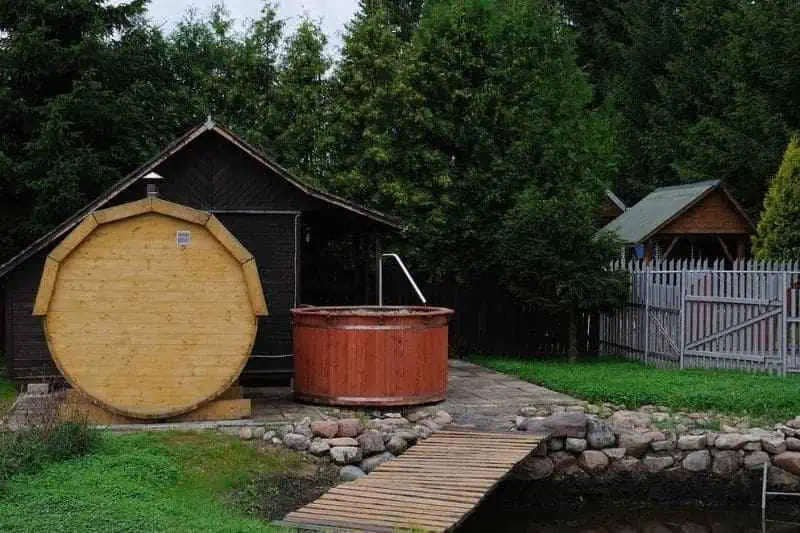
Safety Protocols and Precautions
When engaging in contrast therapy, making your safety and well-being the top priority remains essential. Here are important protocols to follow:
Gradual Introduction Protocols
Start with shorter durations and moderate temperatures. Begin with 5-10 minutes in lower-temperature saunas, gradually increasing intensity as your body adapts. Never expose yourself to extreme temperatures beyond comfortable handling capacity.
Emergency Response Procedures
Learn to recognize warning signs requiring immediate session termination:
- Dizziness, lightheadedness, or nausea
- Chest pain or irregular heartbeat
- Difficulty breathing or hyperventilation
- Confusion or disorientation
- Excessive fatigue or weakness
Supervision and Support Requirements
Never practice contrast therapy alone. Have trained supervision available, especially during initial sessions. Keep emergency contacts readily accessible and ensure someone knows your session schedule.
Pre-Session Preparation
- Avoid alcohol, caffeine, and medications affecting temperature control
- Eat light meals 2-3 hours before sessions
- Remove jewelry and metal objects before sauna use
- Have towels and warm clothing ready for post-session warming
Post-Session Recovery Protocols
After cold exposure, allow natural rewarming rather than using external heat sources. Change into dry, warm clothing immediately and consume warm beverages with electrolytes to support recovery.
By following these comprehensive safety measures, you can ensure positive and safe contrast therapy experiences while maximizing health benefits.
Expert Insights and Professional Recommendations
Leading researchers and practitioners provide valuable guidance for optimizing contrast therapy protocols.
Dr. Rhonda Patrick’s Research-Based Recommendations
Dr. Rhonda Patrick, biomedical scientist and founder of FoundMyFitness, emphasizes evidence-based protocols: “Sauna use linked to a 65-66% lower risk of dementia and Alzheimer’s disease when used four to seven times weekly. Optimal protocol: 174°F for 20 minutes“14.
Her research shows that “frequent and consistent traditional sauna sessions can increase heat shock protein production up to 48%, aiding cellular repair, immune support, and longevity“15.
Andrew Huberman’s Protocol Insights
Neuroscientist Andrew Huberman recommends specific approaches: “I personally prefer to do a cold plunge after sauna use. Cold exposure first, early in the day for dopamine release and to elevate catecholamines and cortisol, which are beneficial when elevated early“16.
Huberman’s key recommendations include avoiding cold immersion within 6 hours after strength training to prevent adaptation interference, while emphasizing cold exposure benefits for mood and alertness.
Medical Professional Perspectives
Sports medicine physician Dr. Dominic King notes: “There’s no doubt that some people get great relief from using ice baths. Some people get physical, mental and functional benefits from this kind of cold therapy“17.
Medical experts consistently emphasize the importance of individual assessment and gradual progression, particularly for people with underlying health conditions.
Industry Expert Recommendations
Professional contrast therapy facilities recommend starting conservatively and building tolerance over time. Key insights include:
- Beginning with shorter exposures and moderate temperatures
- Focusing on consistent practice rather than extreme temperatures
- Combining contrast therapy with proper nutrition and hydration
- Monitoring individual responses and adjusting protocols accordingly
These expert perspectives emphasize that successful contrast therapy requires personalized approaches based on individual health status, goals, and tolerance levels.
Frequently Asked Questions
What is contrast therapy?
Contrast therapy involves alternating between hot and cold temperatures to stimulate circulation, reduce inflammation, and promote recovery. The temperature differences create vascular exercise that enhances heart function and triggers beneficial cellular responses.
What does the Nordic Cycle mean?
The Nordic Cycle refers to the traditional Finnish practice of alternating between sauna sessions and cold water immersion. This cultural tradition dates back over 2,000 years and forms the foundation of modern contrast therapy protocols.
When should you skip the cold plunge?
Avoid cold plunges if you have heart conditions, high blood pressure, or circulation issues. Pregnant women and those with fever should wait. Check with your healthcare provider if you have underlying health concerns.
What activities should I avoid post-cold plunge?
Skip intense workouts and hot showers immediately after cold therapy. Give your body 30-60 minutes to return to normal temperature naturally. Avoid alcohol as it affects temperature regulation.
How long should I stay in a sauna for contrast therapy?
Start with 10-15 minutes for beginners, building up to 20 minutes for experienced users. The optimal duration depends on temperature and individual tolerance levels.
What’s the ideal cold plunge temperature?
Maintain water temperature between 50°F to 60°F (10°C to 15°C) for therapeutic benefits. Start warmer and gradually decrease temperature as tolerance improves.
What’s the best time of day for contrast therapy?
Morning sessions provide energy and alertness benefits, while evening sessions can promote relaxation and better sleep quality. Choose timing based on your goals and lifestyle.
Can contrast therapy help with weight loss?
Yes, cold exposure activates brown fat and increases metabolic rate. Combined with sauna sessions, contrast therapy can support weight management through enhanced calorie burning.
Is contrast therapy safe during pregnancy?
No, pregnant women should avoid both saunas and cold plunges due to risks of overheating and heart stress that could affect fetal development.
How does contrast therapy compare to regular exercise?
Contrast therapy provides heart benefits similar to moderate exercise but shouldn’t replace physical activity. It complements exercise routines by enhancing recovery and circulation.
How long does it take to see benefits from contrast therapy?
Immediate benefits include improved mood and energy. Long-term benefits like heart improvements and stress resilience typically develop over 4-8 weeks of consistent practice.
Conclusion
The sauna and cold plunge combo represents a powerful wellness practice backed by both ancient wisdom and modern science. Research shows remarkable benefits including enhanced athletic recovery, improved circulation, better mental clarity, and faster healing.
While the benefits are compelling, safety must remain your top priority. Start gradually, listen to your body, and talk to healthcare providers when appropriate. The key to success lies in consistent practice rather than extreme temperatures.
Whether you’re seeking athletic recovery or general wellness enhancement, contrast therapy offers a scientifically-validated approach to optimizing your health. The Nordic tradition of sauna and cold plunge continues to prove its value in our modern pursuit of vitality and wellbeing.
Transform your health journey today by embracing the time-tested power of sauna and cold plunge contrast therapy – your body and mind will thank you for years to come.
Resources
- Laukkanen JA, Laukkanen T, Kunutsor SK. Cardiovascular and other health benefits of sauna bathing: a review of the evidence. Mayo Clin Proc. 2018;93(8):1111-1121. doi:10.1016/j.mayocp.2018.04.008 ↩︎
- Laukkanen T, Kunutsor SK, Khan H, Willeit P, Zaccardi F, Laukkanen JA. Sauna bathing is associated with reduced cardiovascular mortality and improves risk prediction in men and women: a prospective cohort study. BMC Med. 2018;16(1):219. doi:10.1186/s12916-018-1198-0 ↩︎
- King KE, McCormick JJ, Kenny GP. The Effect of 7-Day Cold Water Acclimation on Autophagic and Apoptotic Responses in Young Males. Adv Biol (Weinh). 2025;9(2):e2400111. doi:10.1002/adbi.202400111 ↩︎
- Crowther F, Sealey R, Crowe M, Edwards A, Halson S. Influence of recovery strategies upon performance and perceptions following fatiguing exercise: a randomized controlled trial. BMC Sports Sci Med Rehabil. 2017;9(1):25. doi:10.1186/s13102-017-0087-8 ↩︎
- Trybulski R, Kużdżał A, Stanula A, Muracki J, Kawczyński A, Kuczmik W, Wang H-K. Acute effects of cold, heat and contrast pressure therapy on forearm muscles regeneration in combat sports athletes: a randomized clinical trial. Sci Rep. 2024;14(1):22410. doi:10.1038/s41598-024-72412-0 ↩︎
- Srámek P, Simecková M, Janský L, Savlíková J, Vybíral S. Human physiological responses to immersion into water of different temperatures. Eur J Appl Physiol. 2000;81(5):436-442. doi:10.1007/s004210050065 ↩︎
- Falla M, Micarelli A, Hüfner K, Strapazzon G. The Effect of Cold Exposure on Cognitive Performance in Healthy Adults: A Systematic Review. Int J Environ Res Public Health. 2021;18(18):9725. Published 2021 Sep 15. doi:10.3390/ijerph18189725 ↩︎
- El-Ansary MR, El-Ansary AR, Said SM, Abdel-Hakeem MA. Regular cold shower exposure modulates humoral and cell-mediated immunity in healthy individuals. J Therm Biol. 2024;125:103971. doi:10.1016/j.jtherbio.2024.103971 ↩︎
- Pilch W, Szarek M, Olga CL, et al. The effects of a single and a series of Finnish sauna sessions on the immune response and HSP-70 levels in trained and untrained men. Int J Hyperthermia. 2023;40(1):2179672. doi:10.1080/02656736.2023.2179672 ↩︎
- Genuis SJ, Birkholz D, Rodushkin I, Beesoon S. Blood, urine, and sweat (BUS) study: monitoring and elimination of bioaccumulated toxic elements. Arch Environ Contam Toxicol. 2011;61(2):344-357. doi:10.1007/s00244-010-9611-5 ↩︎
- Kowatzki D, Macholdt C, Krull K, et al. Effect of regular sauna on epidermal barrier function and stratum corneum water-holding capacity in vivo in humans: a controlled study. Dermatology. 2008;217(2):173-180. doi:10.1159/000137283 ↩︎
- Moini Jazani A, Ayati MH, Nadiri AA, Nasimi Doost Azgomi R. Efficacy of hydrotherapy, spa therapy, and balneotherapy for psoriasis and atopic dermatitis: a systematic review. Int J Dermatol. 2023;62(2):177-189. doi:10.1111/ijd.16080 ↩︎
- Johnson DG, Hayward JS, Jacobs TP, Collis ML, Eckerson JD, Williams RH. Plasma norepinephrine responses of man in cold water. J Appl Physiol Respir Environ Exerc Physiol. 1977;43(2):216-220. doi:10.1152/jappl.1977.43.2.216 ↩︎
- https://tim.blog/2025/07/24/dr-rhonda-patrick/ ↩︎
- https://www.foundmyfitness.com/episodes/medcram-sauna ↩︎
- https://ai.hubermanlab.com/s/lgBYlgwK ↩︎
- https://health.clevelandclinic.org/what-to-know-about-cold-plunges ↩︎
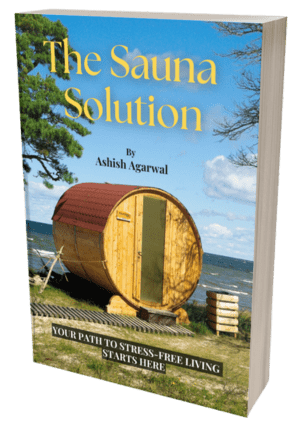
“Become a Sauna Expert Overnight!”
Grab Your “FREE” Sauna E-book NOW!
Get your hands on the ultimate sauna manual. From history to DIY setups, our free guide has it all.

As a Chartered Accountant turned sauna enthusiast, I bring a unique blend of analytical skills and hands-on experience to the world of heat therapy. With over a decade dedicated to researching and testing sauna products and practices, I’ve developed a deep understanding of this field. A the founder of HomeInDepth.com, I provide reliable, easy-to-understand information on all aspects of saunas. My goal is to guide you through every step of your sauna journey, offering meticulously researched, unbiased advice to help you make informed decisions and create your perfect sauna experience. I’m always happy to hear from sauna lovers like you—feel free to leave questions or share your own tips in the comments below so we can learn together. Contact me on:

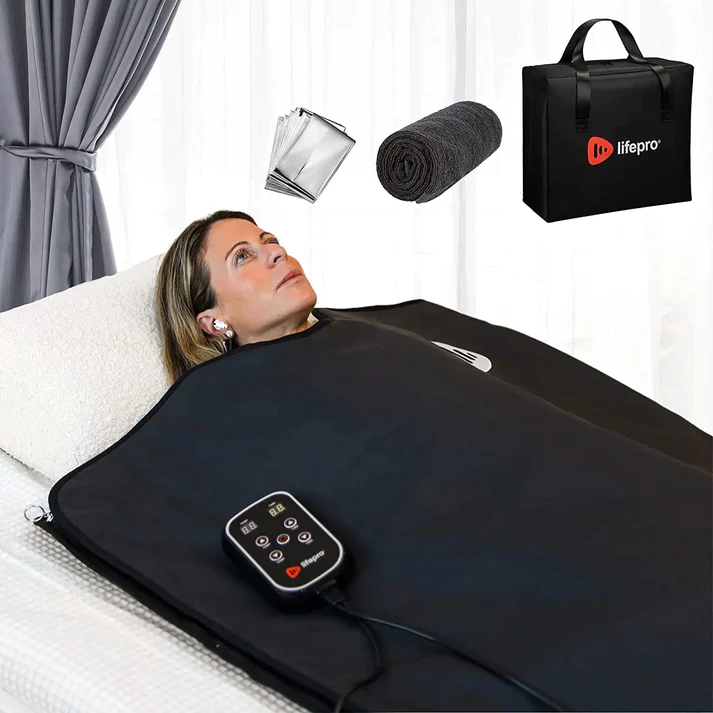
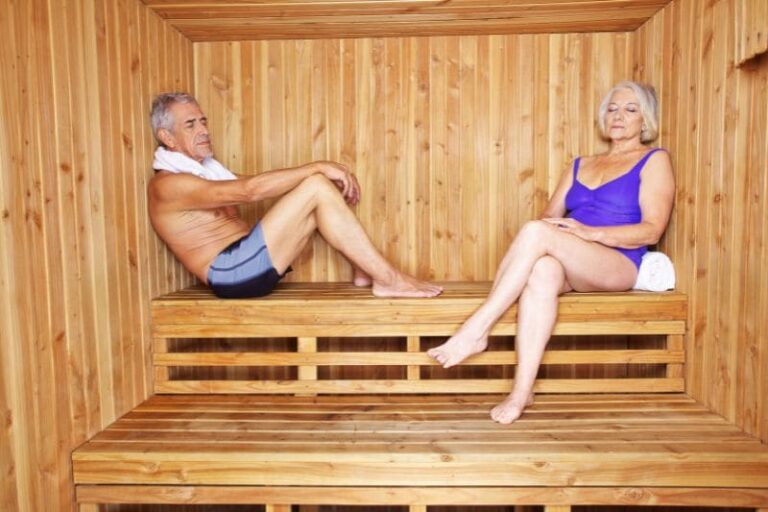
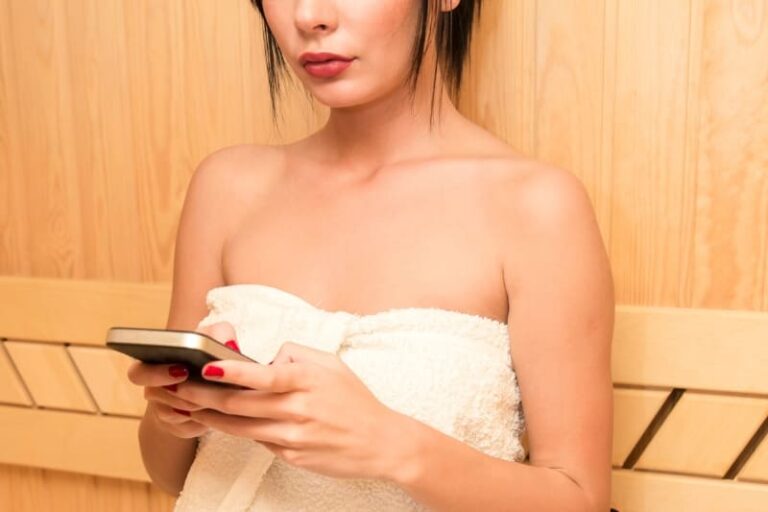
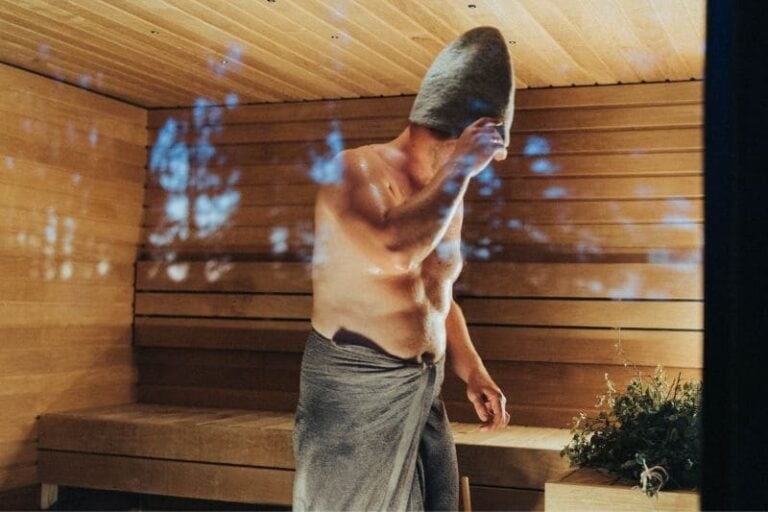

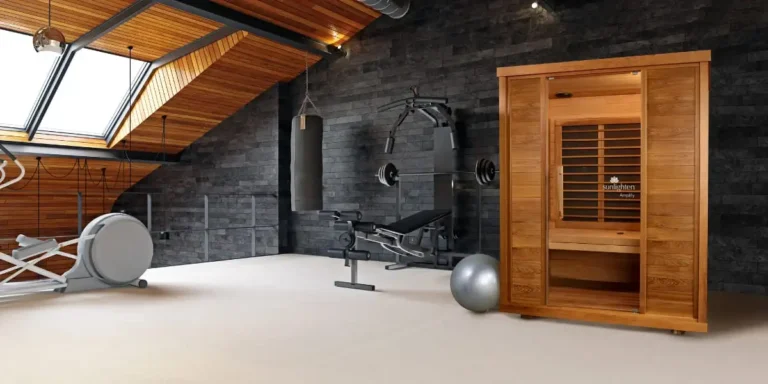
6 Comments